Search Result
Results for "
Neuroblastoma cells
" in MedChemExpress (MCE) Product Catalog:
1
Biochemical Assay Reagents
| Cat. No. |
Product Name |
Target |
Research Areas |
Chemical Structure |
-
- HY-13811
-
|
|
E1/E2/E3 Enzyme
Apoptosis
|
Cancer
|
|
NSC697923 is a potent UBE2N (ubiquitin-conjugating enzyme E2 N, Ubc13) inhibitor. NSC697923 induces neuroblastoma (NB) cell death via promoting nuclear importation of p53 in p53 wild-type NB cells. NSC697923 also induces cell death in p53 mutant NB cells by activation of JNK-mediated apoptotic pathway. NSC697923 inhibits DNA damage and NF-κB signaling. Antitumor activity .
|
-

-
- HY-133011
-
|
|
nAChR
|
Neurological Disease
|
|
nAChR agonist 1 is a potent, brain-permeable, and orally efficacious positive allosteric modulator of α7 nicotinic acetylcholine receptor (α7 nAChR). nAChR agonist 1 has the EC50 of 0.32 µM in a Ca 2+ mobilization assay (PNU-282987-induced, FLIPR based) in human IMR-32 neuroblastoma cells that endogenously express α7 nAChR. nAChR agonist 1 can be develpoped for the treatment of Alzheimer’s disease .
|
-

-
- HY-122112
-
|
|
Sigma Receptor
|
Cancer
|
|
CM572 is a selective irreversible partial sigma-2 receptor agonist. CM572 has antitumor activity. CM572 induces dose-dependent cell death, with an EC50 of 7.6 μM in SK-N-SH neuroblastoma cells. CM572 can be used for the research of kinds of diseases such as neuroblastoma, breast cancer .
|
-
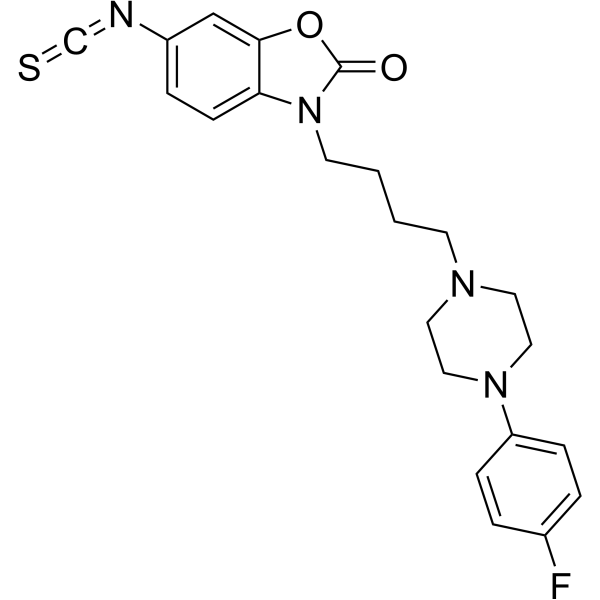
-
- HY-113915
-
|
|
Apoptosis
|
Neurological Disease
Cancer
|
|
Kuguaglycoside C is a triterpene glycoside that can be isolated from the leaves of Momordica charantia. Kuguaglycoside C induces caspase‐independent DNA cleavage and cell death of neuroblastoma cells. Kuguaglycoside C also significantly increases the expression and cleavage of apoptosis-inducing factor (AIF) .
|
-
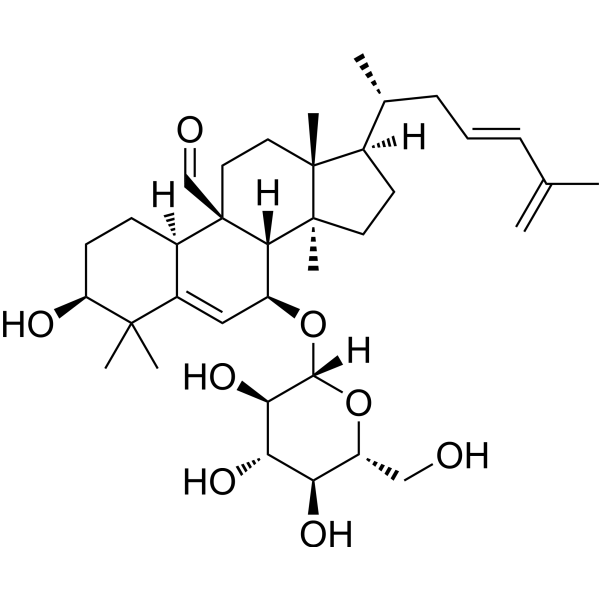
-
- HY-158109
-
|
|
Others
|
Cancer
|
|
M3554 is a novel anti-GD2 ADC designed based on humanized ch14.18 anti-GD2 antibody and has anti-tumor activity. The cytotoxicity of M3554 against the GD2-positive neuroblastoma cell line CHP134 was in the subnanomolar IC50 range.
|
-

-
- HY-136453
-
|
|
Eukaryotic Initiation Factor (eIF)
Apoptosis
|
Cancer
|
|
CR-1-31-B is a synthetic rocaglate and a potent eIF4A inhibitor. CR-1-31-B exhibits powerful inhibitory effects over eIF4A by perturbing the interaction between eIF4A and RNA, sequentially impeding initiation during protein synthesis. CR-1-31-B perturbs association of Plasmodium falciparum eIF4A (PfeIF4A) with RNA. CR-1-31-B induces apoptosis of neuroblastoma and gallbladder cancer cells .
|
-
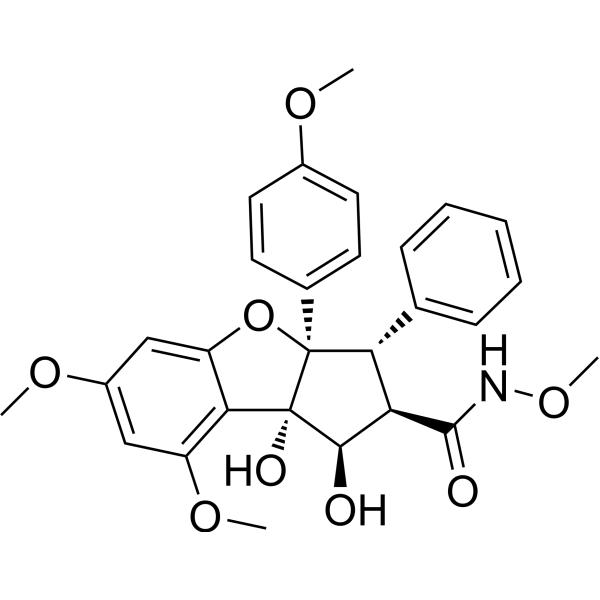
-
- HY-154949
-
|
|
WDR5
|
Cancer
|
|
WDR5-IN-6 is a WDR5 inhibitor, targeting to WBM site. WDR5-IN-6 inhibits cell proliferation of neuroblastoma cell lines with potent anti-tumor activity. WDR5-IN-6 shows high synergy with OICR-9429 (HY-16993), a WDR5 inhibitor targeting to WIN site. WDR5-IN-6 can be used for reasearch in neuroblastoma .
|
-
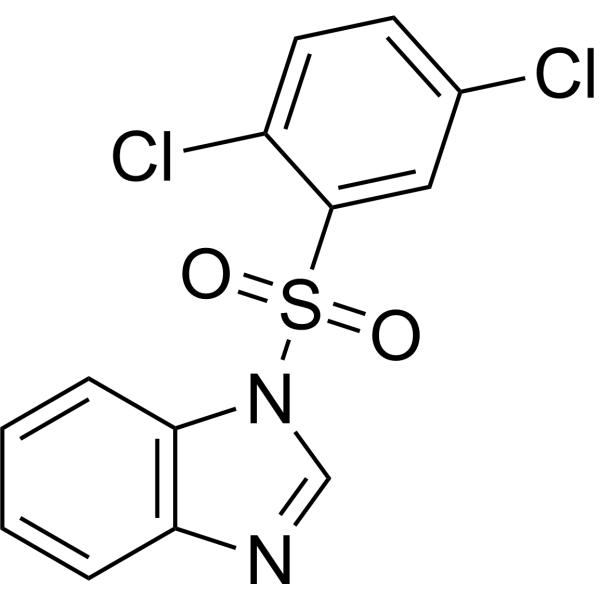
-
- HY-111899
-
|
|
Others
|
Cancer
|
|
7-Ethoxyrosmanol is a phenolic diterpene that is isolated from Salvia chamelaeagnea. 7-Ethoxyrosmanol has antioxidant activity in vitro and antitumor effects on neuroblastoma cells .
|
-
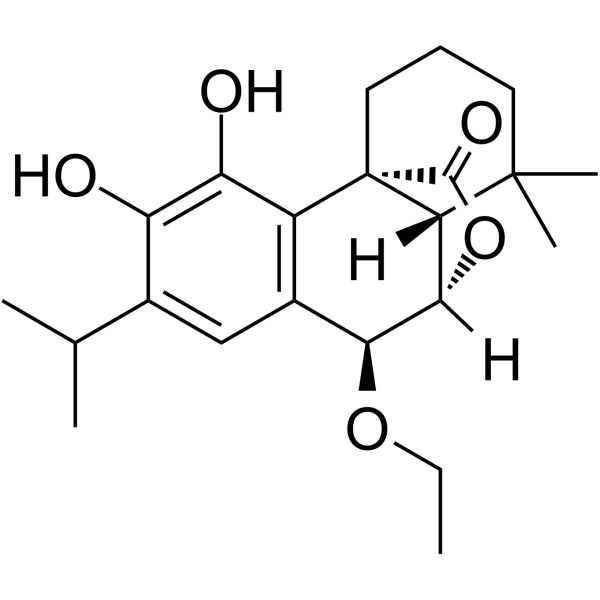
-
- HY-102010
-
|
(+)-Pancratistatin
|
Apoptosis
|
Cancer
|
|
Pancratistatin is an isoquinoline alkaloid that can be isolated from Hymenocallis littoralis. Pancratistatin induces apoptosis of human melanoma cells. Pancratistatin can be used for the research of neuroblastoma, leukemia and breast cancer .
|
-

-
- HY-15894A
-
BQ-788
Maximum Cited Publications
8 Publications Verification
|
Endothelin Receptor
|
Cardiovascular Disease
Endocrinology
|
|
BQ-788 is a potent, selective ETB receptor antagonist with IC50 of 1.2 nM for inhibition of ET-1 binding to human Girardi heart cells, poorly inhibiting the binding to ETA receptors in human neuroblastoma cell line SK-N-MC cells with IC50 of 1300 nM .
|
-
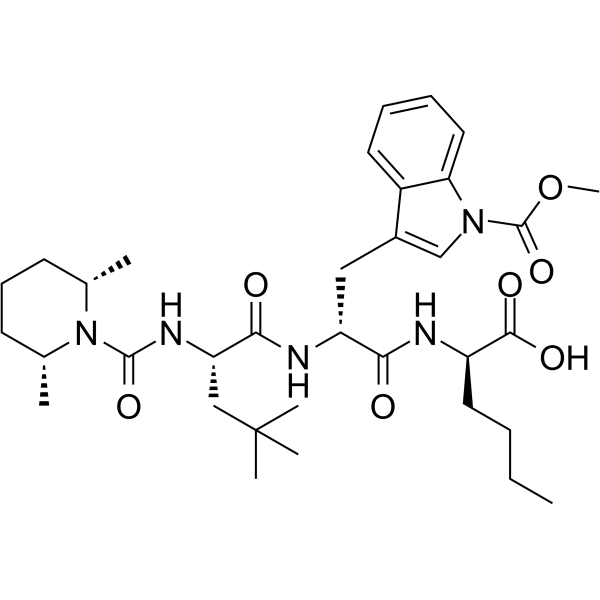
-
- HY-155962
-
|
|
Microtubule/Tubulin
|
Cancer
|
|
Tubulin polymerization-IN-47 (Compound 4h) is a tubulin polymerization inhibitor and mitotic inhibitor. Tubulin polymerization-IN-47 inhibits neuroblastoma cancer cell proliferation, with IC50s of 7 and 12 nM for Chp-134 and Kelly cell line .
|
-
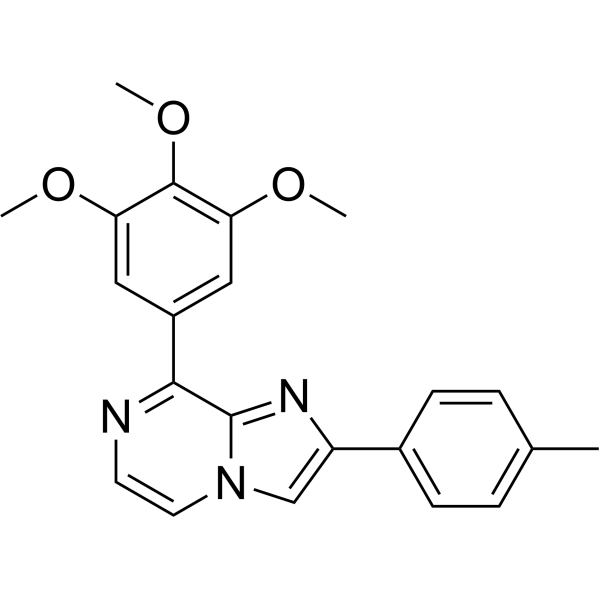
-
- HY-N10890
-
|
|
Others
|
Cancer
|
|
Alpinoid D, a diarylheptanoid, can be isolated from the MeOH extract from the rhizomes of Alpinia officinarum Hance. Alpinoid D shows cytotoxic effect against IMR-32 human neuroblastoma cell line .
|
-
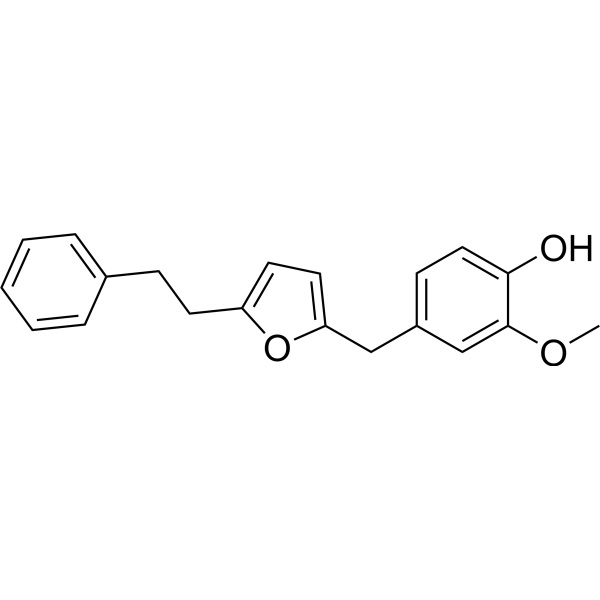
-
- HY-111588
-
-
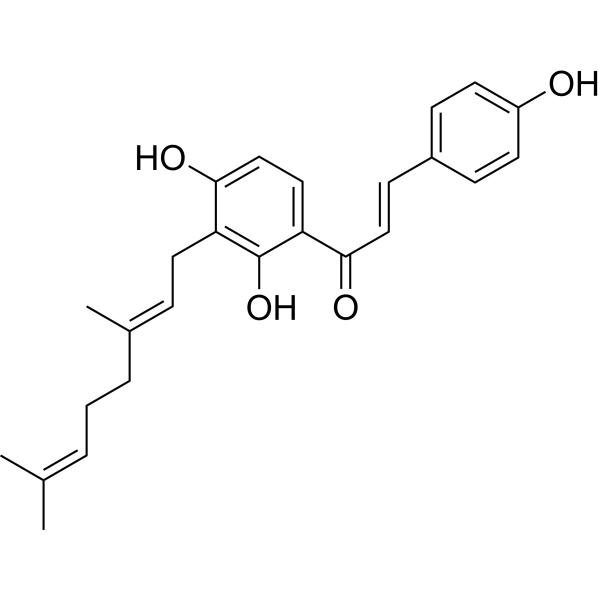
-
- HY-15609
-
-
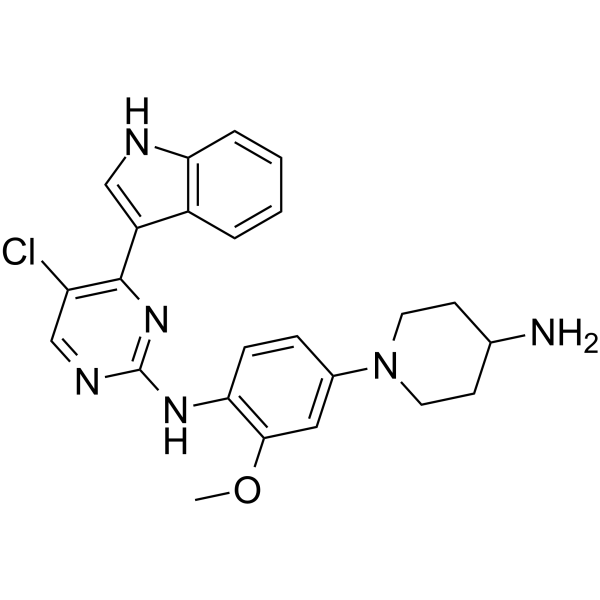
-
- HY-155963
-
|
|
Microtubule/Tubulin
|
Cancer
|
|
Tubulin polymerization-IN-48 (Compound 4k) is a tubulin polymerization inhibitor. Tubulin polymerization-IN-48 has a moderate effect on disruption of the microtubule network. Tubulin polymerization-IN-48 inhibits neuroblastoma cancer cell proliferation, with IC50s of 79 and 165 nM for Chp-134 and Kelly cell line .
|
-

-
- HY-15643
-
|
|
TNF Receptor
Potassium Channel
|
Cancer
|
|
LY303511 is a structural analogue of LY294002. LY303511 does not inhibit PI3K. LY303511 enhances TRAIL sensitivity of SHEP-1 neuroblastoma cells. LY303511 reversibly blocks K + currents (IC50=64.6±9.1 μM) in MIN6 insulinoma cells.
|
-
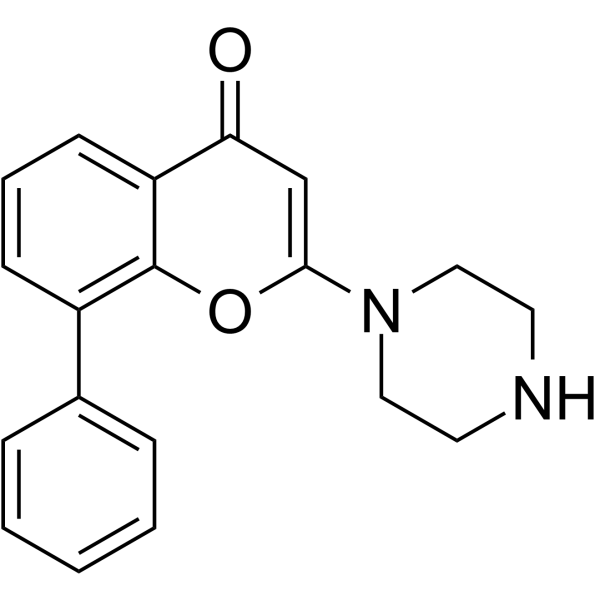
-
- HY-15643A
-
|
|
TNF Receptor
Potassium Channel
|
Cancer
|
|
LY 303511 hydrochloride is a structural analogue of LY294002. LY303511 does not inhibit PI3K. LY303511 enhances TRAIL sensitivity of SHEP-1 neuroblastoma cells. LY303511 reversibly blocks K + currents (IC50=64.6±9.1 μM) in MIN6 insulinoma cells.
|
-

-
- HY-14374
-
GPP78
1 Publications Verification
CAY10618
|
NAMPT
Autophagy
|
Inflammation/Immunology
Cancer
|
|
GPP78 (CAY10618) is a potent Nampt inhibitor with an IC50 of 3.0 nM for nicotinamide adenine dinucleotide (NAD) depletion. GPP78 is cytotoxic to neuroblastoma cell line SH-SY5Y cells with an IC50 of 3.8 nM by inducing autophagy. GPP78 has anti-cancer and anti-inflammatory effects .
|
-
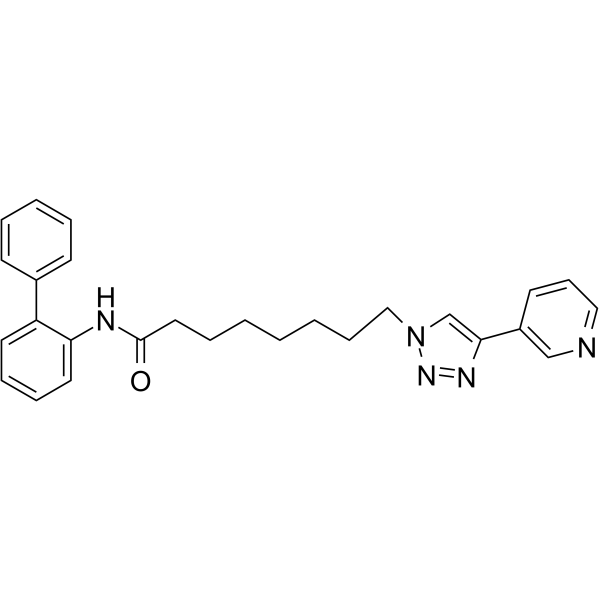
-
- HY-139201
-
|
|
Others
|
Cancer
|
|
Poly-D-lysine hydrobromide (MW 30000-70000) is a synthetic polymeric substrate and is one of the most widely used substrate in neural cell culture. Poly-D-lysine hydrobromide (MW 30000-70000) removes proteinase K-resistant PrP from prion-infected SN56 neuroblastoma cells without affecting PrP C .
|
-

-
- HY-139201A
-
|
|
Others
|
Cancer
|
|
Poly-D-lysine hydrobromide (MW 70000-150000) is a synthetic polymeric substrate and is one of the most widely used substrate in neural cell culture. Poly-D-lysine hydrobromide (MW 70000-150000) removes proteinase K-resistant PrP from prion-infected SN56 neuroblastoma cells without affecting PrP C .
|
-
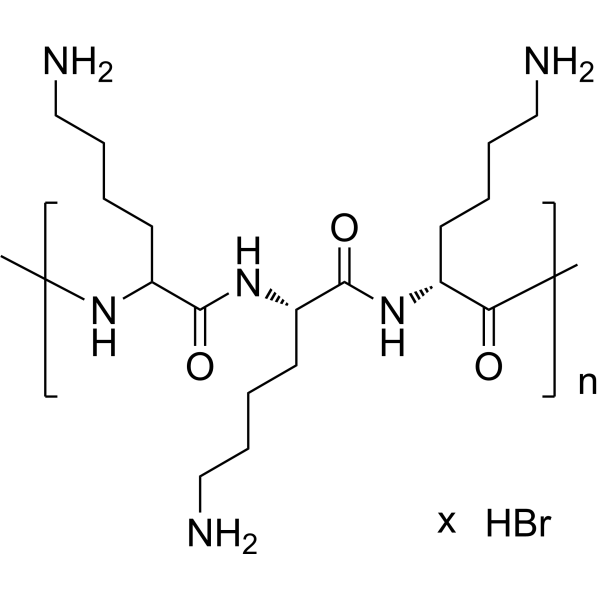
-
- HY-109583
-
|
4-Oxo-4-HPR
|
Apoptosis
Reactive Oxygen Species
Drug Metabolite
|
Cancer
|
|
4-Oxofenretinide (4-Oxo-4-HPR) is a metabolite of Fenretinide (HY-15373). 4-Oxofenretinide induces cell growth inhibition in ovarian, breast, and neuroblastoma tumor cell lines. 4-Oxofenretinide causes a marked accumulation of cells in G2-M. 4-Oxofenretinide induces cancer cell apoptosis through caspase-9 .
|
-

-
- HY-14776
-
|
CX-3543
|
DNA/RNA Synthesis
|
Cancer
|
|
Quarfloxin (CX-3543), a fluoroquinolone derivative with antineoplastic activity, targets and inhibits RNA pol I activity, with IC50 values in the nanomolar range in neuroblastoma cells. Quarfloxin disrupts the interaction between the nucleolin protein and a G-quadruplex DNA structure in the ribosomal DNA (rDNA) template .
|
-

-
- HY-N2166
-
|
α-Tomatine; Lycopersicin; Tomatin
|
|
|
|
Tomatine is a glycoalkaloid, found in the tomato plant (Lycopersicon esculentum Mill.). Tomatine elicits neurotoxicity in RIP1 kinase and caspase-independent manner. Tomatine promotes the upregulation of nuclear apoptosis inducing factor (AIF) in neuroblastoma cells. Tomatine also inhibits 20S proteasome activity .
|
-
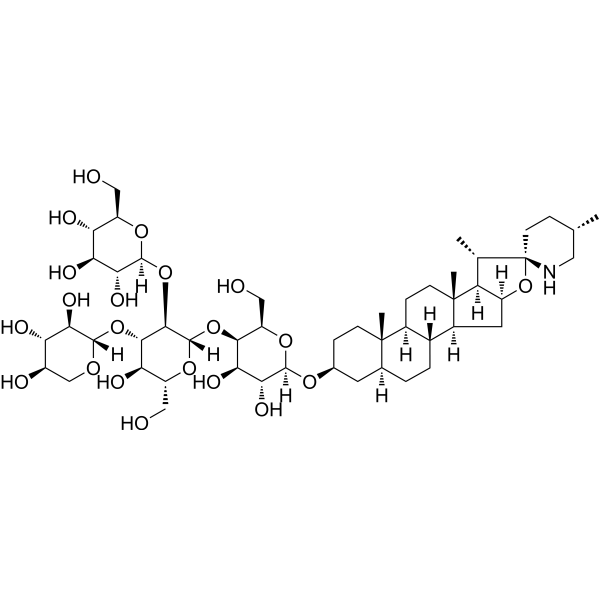
-
- HY-W001160
-
|
|
Endogenous Metabolite
|
Others
|
|
5-Hydroxyindole, a hydroxylated indole, can be found in a vast array of pharmacologically active agents and natural products. 5-Hydroxyindole slows desensitization of the 5-HT3 receptor-mediated ion current in N1E-115 neuroblastoma cells .
|
-

-
- HY-W011762
-
|
|
Others
|
Cancer
|
|
VK3-OCH3 is a potent antitumor agent. VK3-OCH3 shows cytotoxicity for neuroblastoma cell lines and low cytotoxicity for normal cell lines. VK3-OCH3 induces apoptosis and cell cycle arrest at G2/M phase in IMR-32 cells. VK3-OCH3 shows antitumor activity .
|
-
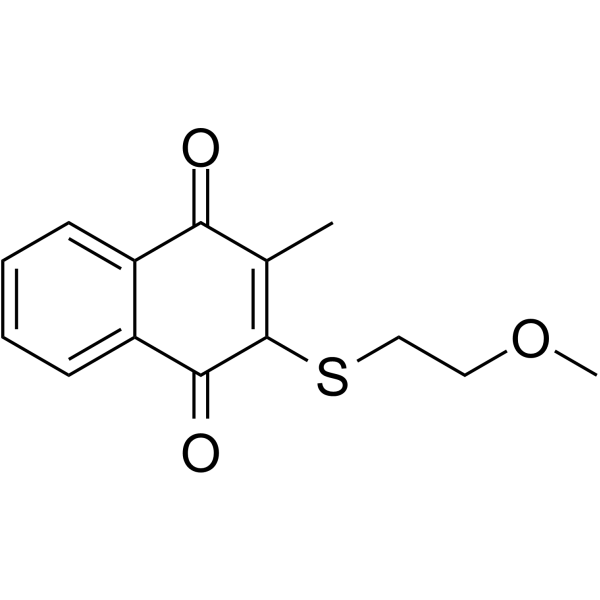
-
- HY-P99757
-
|
Hu3F8-BsAb
|
CD2
CD3
|
Cancer
|
|
Nivatrotamab (Hu3F8-BsAb) is a humanized anti-GD2/CD3 bispecific antibody. Nivatrotamab is a CD3- and GD2-specific bsAb-based T-cell engager. Nivatrotamab can be used in research of neuroblastoma .
|
-

-
- HY-161156
-
|
|
Cholinesterase (ChE)
|
Neurological Disease
Cancer
|
|
BChE-IN-26 (Compound 7b) is a selective AChE and BChE inhibitor with Ki value of 35 μM and 1.6 μM. BChE-IN-26 has cytotoxicity to human neuroblastoma (SH-SY5Y) cell line. BChE-IN-26 can be used for the research of Alzheimer’s disease .
|
-

-
- HY-76474
-
|
|
Syk
Apoptosis
|
Inflammation/Immunology
Cancer
|
|
BAY 61-3606 is an orally available, ATP-competitive, reversible and highly selective Syk inhibitor with a Ki of 7.5 nM and an IC50 of 10 nM . BAY 61-3606 reduces ERK1/2 and Akt phosphorylation in neuroblastoma cell . BAY 61-3606 induces a large decrease of Syk phosphorylation in K-rn cell lysates . Bay 61-3606 sensitizes TRAIL-induced apoptosis by downregulating Mcl-1 in breast cancer cells .
|
-
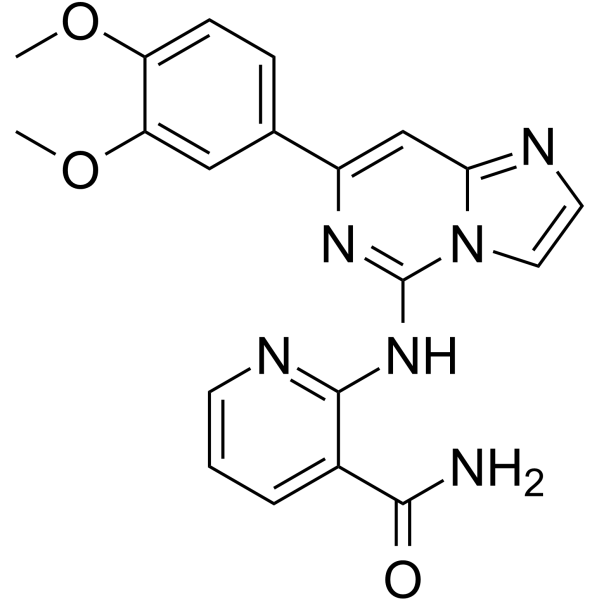
-
- HY-14985
-
|
|
Syk
Apoptosis
|
Inflammation/Immunology
Cancer
|
|
BAY 61-3606 dihydrochloride is an orally available, ATP-competitive, reversible and highly selective Syk inhibitor with a Ki of 7.5 nM an IC50 of 10 nM . BAY 61-3606 dihydrochloride reduces ERK1/2 and Akt phosphorylation in neuroblastoma cell . BAY 61-3606 dihydrochloride induces a large decrease of Syk phosphorylation in K-rn cell lysates . Bay 61-3606 dihydrochloride sensitizes TRAIL-induced apoptosis by downregulating Mcl-1 in breast cancer cells .
|
-
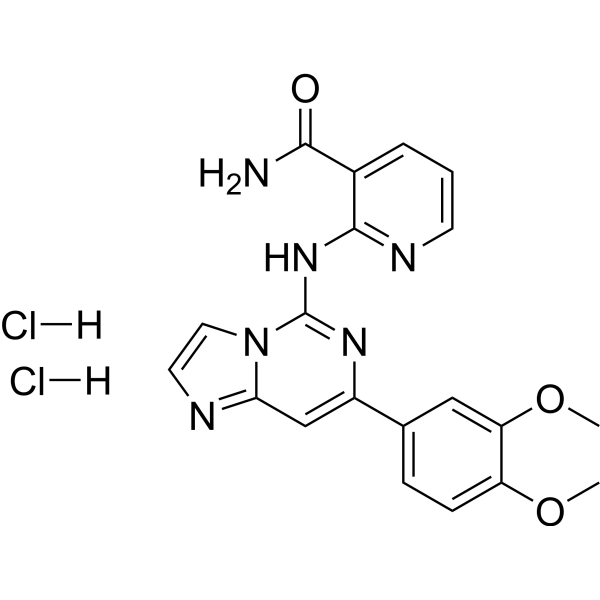
-
- HY-136910
-
|
|
Deubiquitinase
|
Cancer
|
|
USP7-IN-7 (compound 124) is a USP7 inhibitor with an IC50 value <10 nM. USP7-IN-7 shows cytotoxicity against p53-mutant cancer cell lines, p53 wild-type blood cancer and neuroblastoma cell lines with low nanomolar values. USP7-IN-7 can be used for cancer research .
|
-
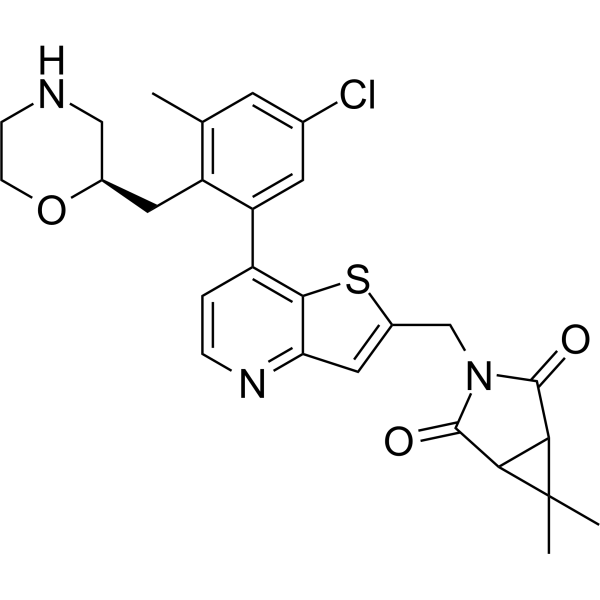
-
- HY-14621
-
|
Vanillylacetone; Gingerone
|
NF-κB
|
Metabolic Disease
Inflammation/Immunology
Cancer
|
|
Zingerone (Vanillylacetone) is a nontoxic methoxyphenol isolated from Zingiber officinale, with potent anti-inflammatory, antidiabetic, antilipolytic, antidiarrhoeic, antispasmodic and anti-tumor properties . Zingerone alleviates oxidative stress and inflammation, down-regulates NF-κB mediated signaling pathways . Zingerone acts as an anti-mitotic agent, and inhibits the growth of neuroblastoma cells .
|
-
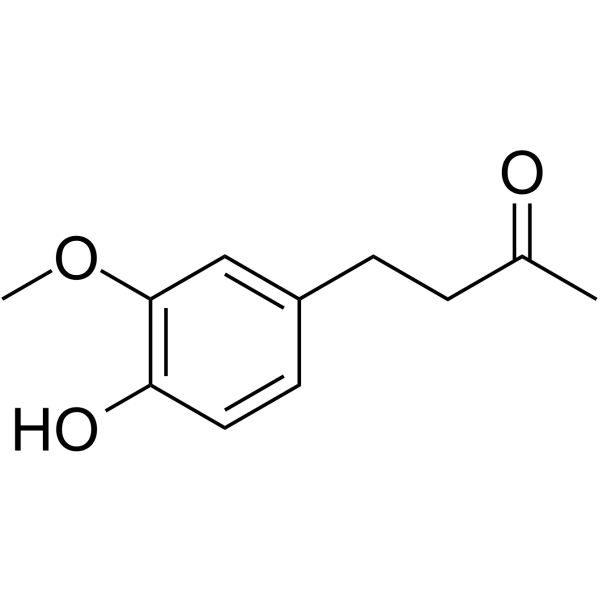
-
- HY-156435
-
|
|
α-synuclein
|
Neurological Disease
|
|
tau protein/α-synuclein-IN-1 is a dual inhibitor of tau protein and α-synuclein. tau protein/α-synuclein-IN-1 reduces α-syn inclusions development in M17D neuroblastoma cells. tau protein/α-synuclein-IN-1 can be used in study Alzheimer’s disease .
|
-
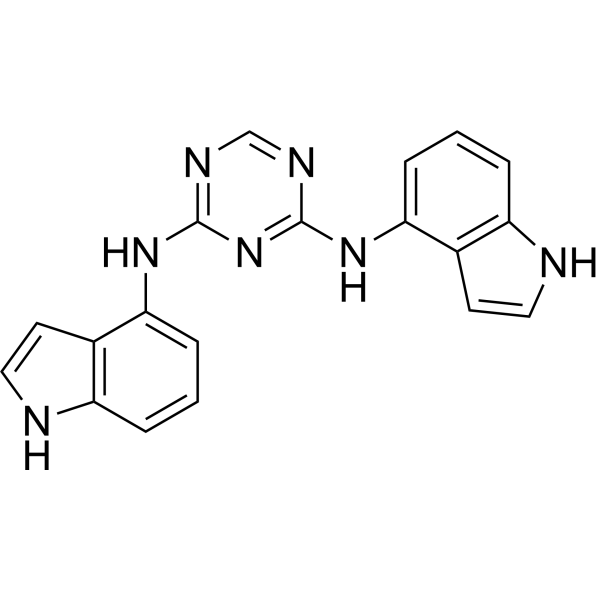
-
- HY-134476
-
|
|
NF-κB
|
Inflammation/Immunology
|
|
NF-κΒ activator 1 is a potent NF-κΒ activator with an EC50 of 0.9 μM. NF-κΒ activator 1 induces superoxide dismutase (SOD)2 mRNA expression .
|
-
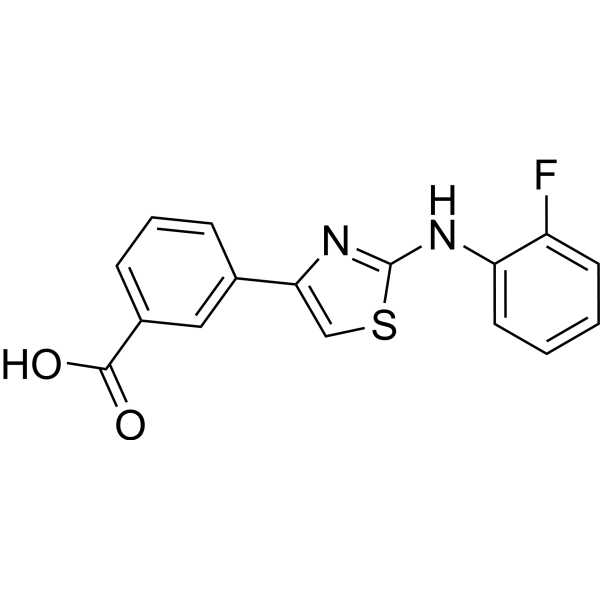
-
- HY-124696
-
|
|
Histone Acetyltransferase
|
Cancer
|
|
PU139 is a potent pan-histone acetyltransferase (HAT) inhibitor. PU139 blocks the HATs Gcn5, p300/CBP-associated factor (PCAF), CREB (cAMP response element-binding) protein (CBP) and p300 with IC50s of 8.39, 9.74, 2.49 and 5.35 μM, respectively .
|
-
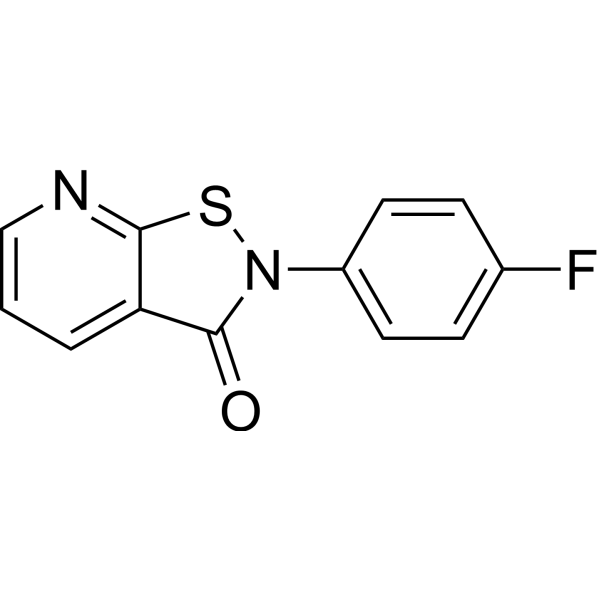
-
- HY-15433
-
|
JNJ-26481585
|
HDAC
Apoptosis
Autophagy
|
Cancer
|
|
Quisinostat (JNJ-26481585) is a potent, second-generation and orally active pan-HDAC inhibitor (HDACi), with IC50 values ranging from 0.11 nM to 0.64 nM for HDAC1, HDAC2, HDAC4, HDAC10 and HDAC11. Quisinostat has a broad spectrum antitumoral activity . Quisinostat can induce autophagy in neuroblastoma cells .
|
-
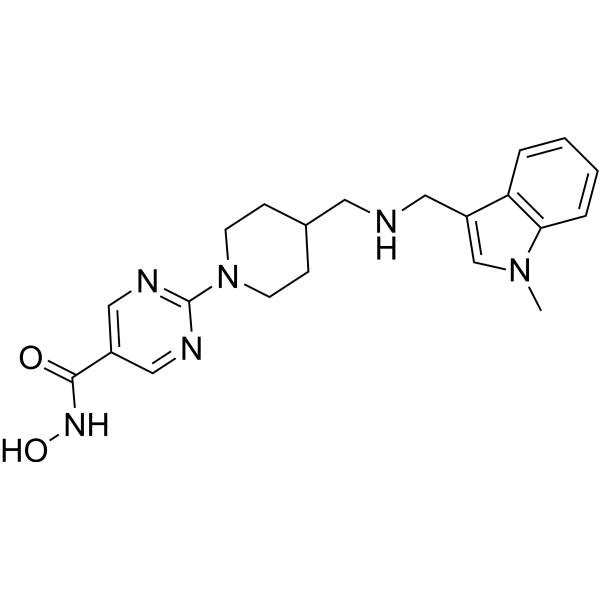
-
- HY-N1391
-
|
10-Deacetylpaclitaxel
|
|
|
|
10-Deacetyltaxol (10-Deacetylpaclitaxel) is a taxane derivative isolated from Taxus wallichiana Zucc . 10-Deacetyltaxol (10-Deacetylpaclitaxel) promotes the polymerization of tubulin and to inhibit the depolymerization of microtubules induced by cold or by calcium ions in vitro . 10-Deacetyltaxol (10-Deacetylpaclitaxel) exhibits cytotoxicity in human glial and neuroblastoma cell-lines .
|
-

-
- HY-14649G
-
|
Vitamin A acid; all-trans-Retinoic acid; ATRA
|
RAR/RXR
|
Cancer
|
|
Retinoic acid (Vitamin A acid) (GMP) is Retinoic acid (HY-14649) produced by using GMP guidelines. GMP small molecules works appropriately as an auxiliary reagent for cell therapy manufacture. Retinoic acid is an agonist of RAR nuclear receptors .
|
-
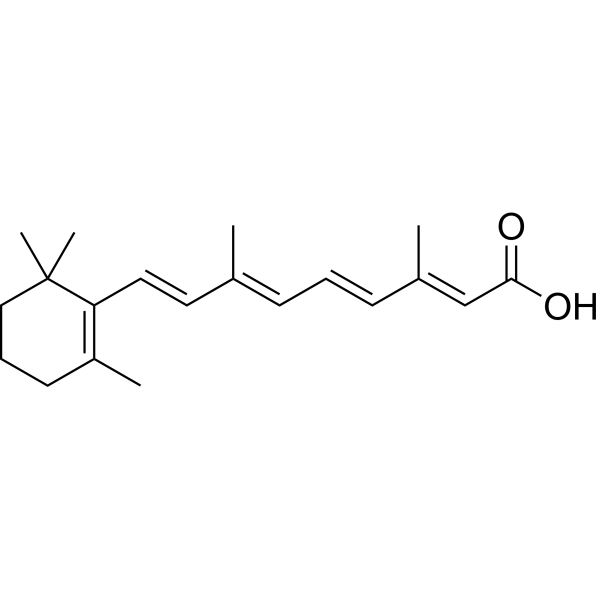
-
- HY-N0303
-
|
|
Mitochondrial Metabolism
Apoptosis
|
Neurological Disease
|
|
Idebenone, a well-appreciated mitochondrial protectant, exhibits protective efficacy against neurotoxicity and can be used for the research of Alzheimer's disease, Huntington's disease. Idebenone (oxidised form) has a dose-dependent inhibitory effect on the enzymatic metabolism of arachidonic acid in astroglial homogenates (IC50=16.65 μM) . Idebenone, a coenzyme Q10 analog and an antioxidant, induces apoptotic cell death in the human dopaminergic neuroblastoma SHSY-5Y cells . Idebenone quickly crosses the blood-brain barrier.
|
-

-
- HY-150772
-
|
|
Microtubule/Tubulin
HDAC
Apoptosis
Mitochondrial Metabolism
|
Cancer
|
|
Tubulin/HDAC-IN-1 is a dual tubulin and HDAC-IN-1 inhibitor through CH/π interaction with tubulin and hydrogen bond interaction with HDAC8. Tubulin/HDAC-IN-1 inhibits tubulin polymerization and selectively inhibits HDAC8 (IC50: 150 nM). Tubulin/HDAC-IN-1 has cytotoxicity against various human cancer cells, also arrests cell cycle in the G2/M phase and induces cell apoptosis. Tubulin/HDAC-IN-1 can be used in the research of hematologic and solid tumors such as neuroblastoma, leukemia .
|
-

-
- HY-16009
-
-
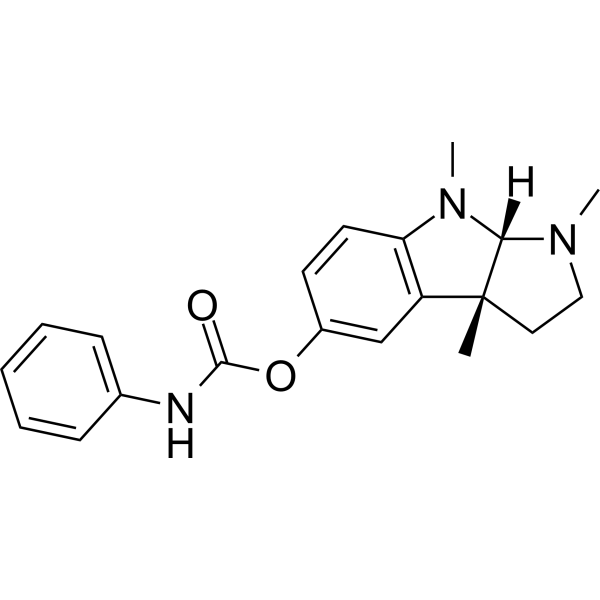
-
- HY-117482
-
|
|
γ-secretase
|
Neurological Disease
|
|
BPN-15606 is a highly potent, orally active γ-secretase modulator (GSM), attenuates the production of Aβ42 and Aβ40 by SHSY5Y neuroblastoma cells with IC50 values of 7 nM and 17nM, respectively. BPN-15606 lowers Aβ42 and Aβ40 levels in the central nervous system of rats and mice. BPN-15606 has acceptable PK/PD properties, including bioavailability, half-life, and clearance .
|
-
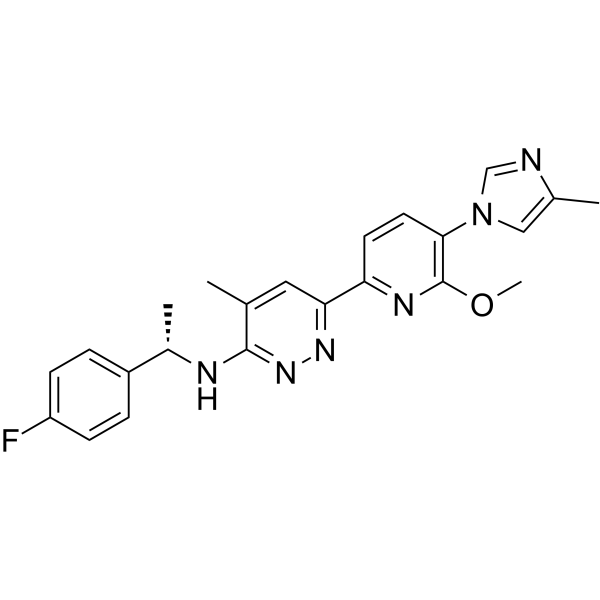
-
- HY-117482A
-
|
|
γ-secretase
|
Neurological Disease
|
|
BPN-15606 besylate is a highly potent, orally active γ-secretase modulator (GSM), attenuates the production of Aβ42 and Aβ40 by SHSY5Y neuroblastoma cells with IC50 values of 7 nM and 17nM, respectively. BPN-15606 besylate lowers Aβ42 and Aβ40 levels in the central nervous system of rats and mice. BPN-15606 besylate has acceptable PK/PD properties, including bioavailability, half-life, and clearance .
|
-
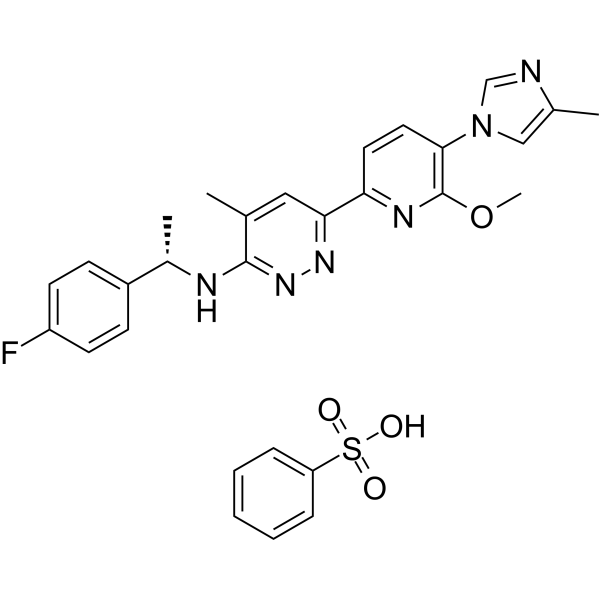
-
- HY-116213
-
-
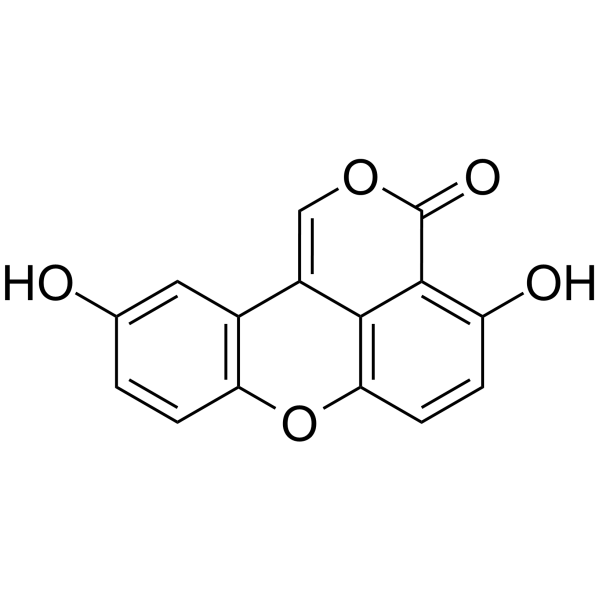
-
- HY-139361
-
|
PIN1-3
|
PIN1
|
Cancer
|
|
Sulfopin (PIN1-3) is a highly selective covalent inhibitor of Pin1 with an apparent Ki of 17 nM. Sulfopin blocks Myc-driven tumors in vivo. The peptidyl-prolyl isomerase, Pin1, is exploited in cancer to activate oncogenes and inactivate tumor suppressors .
|
-
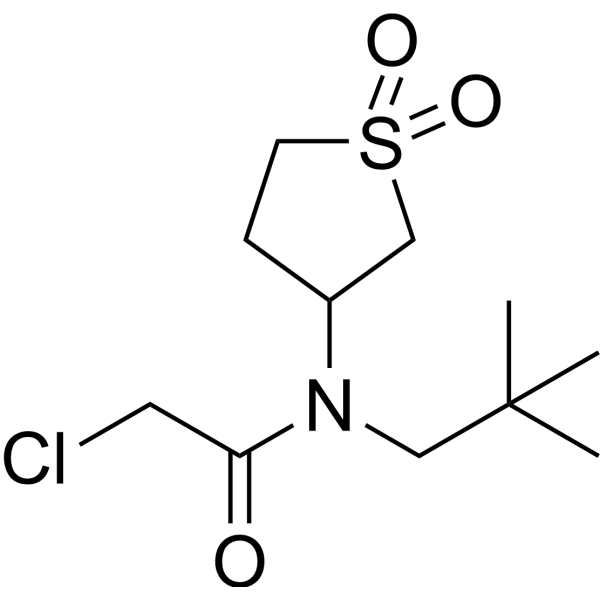
-
- HY-P5164
-
|
|
Sodium Channel
|
Neurological Disease
|
|
GrTx1 is a peptide toxin originally isolated from the venom of the spider Grammostola rosea. GrTx1 blocks sodium channel, with IC50s of 0.63 µM, 0.23 µM, 0.77 µM, 1.29 µM, 0.63 µM and 0.37 µM for Nav1.1, Nav1.2, Nav1.3, Nav1.4, Nav1.6 and Nav1.7, repectively .GrTx1 can be used for neurological disease research .
|
-

-
- HY-162050
-
|
|
Sirtuin
|
Neurological Disease
|
|
8AQ?Cu?5Iu is an activator of SIRT1. 8AQ?Cu?5Iu exhibits neuroprotective effects by
modulating the SIRT1/3-FOXO3a signaling pathway. 8AQ?Cu?5Iu can used in study attenuating neurodegenerative diseases .
|
-

-
- HY-124675
-
MYCMI-6
1 Publications Verification
NSC354961
|
c-Myc
Apoptosis
|
Cancer
|
|
MYCMI-6 (NSC354961) is a potent and selective endogenous MYC:MAX protein interactions inhibitor. MYCMI-6 blocks MYC-driven transcription and binds selectively to the MYC bHLHZip domain with a Kd of 1.6 μM. MYCMI-6 inhibits tumor cell growth in a MYC-dependent manner (IC50<0.5 μM). MYCMI-6 is not cytotoxic to normal human cells. MYCMI-6 induces apoptosis .
|
-
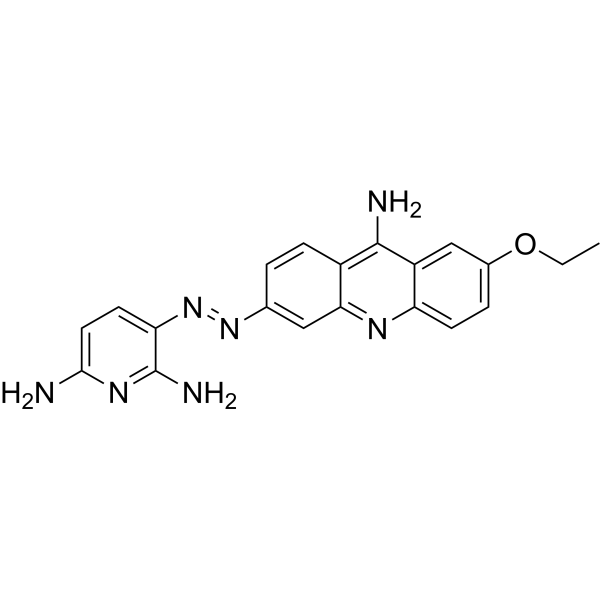
-
- HY-110122
-
|
|
mGluR
|
Neurological Disease
|
|
AZ 12216052 is a mGluR8 positive allosteric modulator, and helps mGluR8 modulate signaling inputing to retinal ganglion cells. AZ 12216052 exhibits antianxiety effect .
|
-
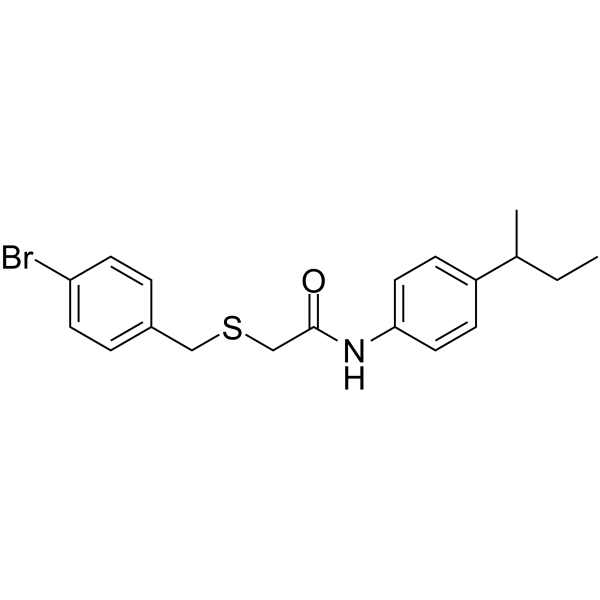
-
- HY-151335
-
|
|
HSP
|
Cancer
|
|
KU-177 is a potent inhibitor of Hsp90 ATPase homologue 1 (Aha1), ablates Aha1-driven enhancement of Hsp90-dependent tau aggregation. KU-177 also disrupts Aha1/Hsp90 interactions (IC50=4.08 μM) without inhibition of Hsp90’s ATPase activity. KU-177 can be used for tauopathies research .
|
-
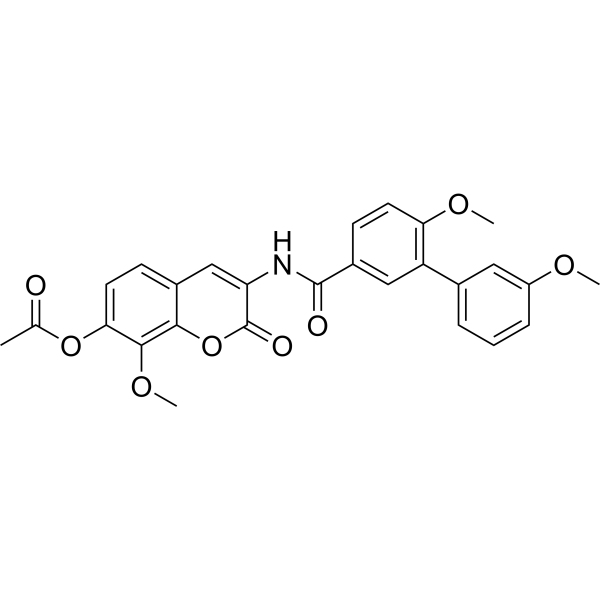
-
- HY-146678
-
|
|
HDAC
Amyloid-β
Cholinesterase (ChE)
|
Neurological Disease
|
|
HDAC6-IN-5 (compound 11b) is a potent and BBB-penetrated HDAC6 inhibitor, with an IC50 of 0.025 μM. HDAC6-IN-5 exhibits strong inhibitory activity against Aβ1-42 self-aggregation and AChE, with IC50 values of 3.0 and 0.72 μM. HDAC6-IN-5 can enhance neurite outgrowth without significant neurotoxicity .
|
-
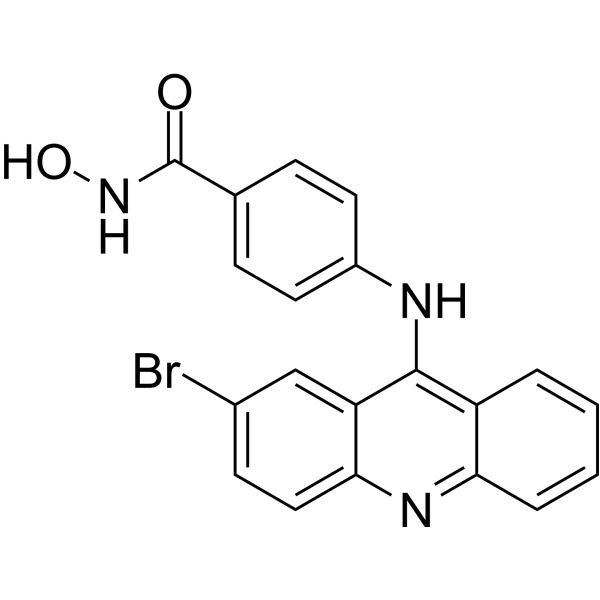
- HY-146679
-
|
|
HDAC
Amyloid-β
Cholinesterase (ChE)
|
Neurological Disease
|
|
HDAC6-IN-6 (compound 6a) is a potent and BBB-penetrated HDAC6 inhibitor, with an IC50 of 0.025 μM. HDAC6-IN-6 exhibits strong inhibitory activity against Aβ1-42 self-aggregation and AChE, with IC50 values of 3.0 and 0.72 μM. HDAC6-IN-6 can enhance neurite outgrowth without significant neurotoxicity .
|
-
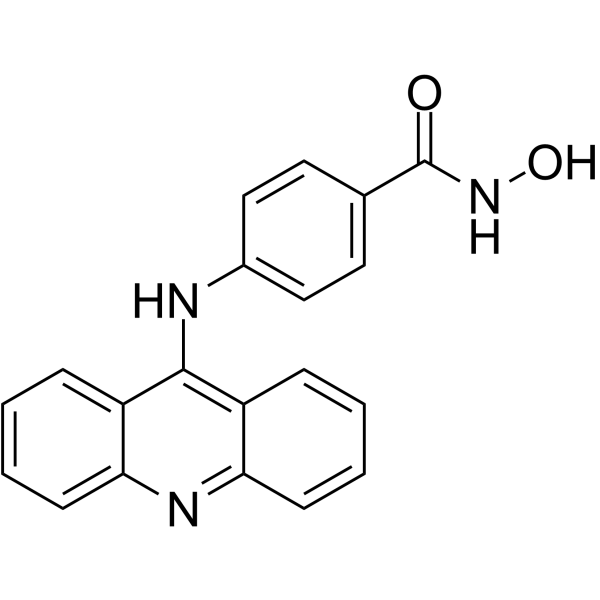
- HY-P3414A
-
|
|
Proteasome
|
Neurological Disease
|
|
Proteasome-activating peptide 1 TFA is a peptide and a potent proteasome activator. Proteasome-activating peptide 1 TFA increases the chymotrypsin-like proteasomal catalytic activity and, consequently, proteolytic rates both in vitro and in culture. Proteasome-activating peptide 1 TFA prevents protein aggregation in a cellular model of amyotrophic lateral sclerosis .
|
-

- HY-100604
-
|
|
γ-secretase
Amyloid-β
|
Neurological Disease
|
|
JNJ-40418677 is an orally active modulator of γ-secretase, can cross the blood-brain barrier. JNJ-40418677 inhibits Aβ42 and NS2B-NS3 protease, with IC50s of 200 nM and 3.9 μM, respectively. JNJ-40418677 displays good biological tolerance, can be use for Alzheimer’s disease research .
|
-
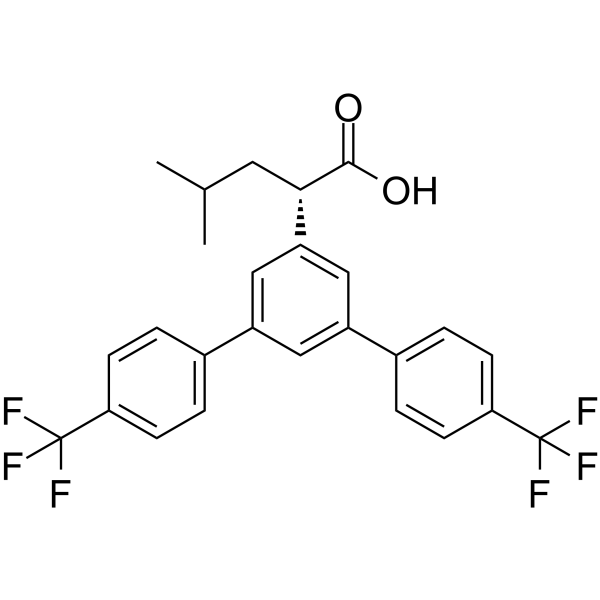
- HY-N6733
-
|
|
DNA/RNA Synthesis
HSV
Apoptosis
Antibiotic
Orthopoxvirus
|
Infection
Inflammation/Immunology
|
|
Aphidicolin is an inhibitor of DNA polymerase α and δ, prevents mitotic cell division by interfering DNA polymerase activity. Aphidicolin is an antibiotic produced by mold Cephalosporium aphidicola, inhibits cellular deoxyribonucleic acid synthesis and the growth of herpes simplex virus. Aphidicolin exhibits anti-orthopoxvirus activity and potentiates apoptosis induced by arabinosyl nucleosides in a human promyelocytic leukemia cell line .
|
-

| Cat. No. |
Product Name |
Type |
-
- HY-14649G
-
|
Vitamin A acid (GMP); all-trans-Retinoic acid (GMP); ATRA (GMP)
|
Fluorescent Dye
|
|
Retinoic acid (Vitamin A acid) (GMP) is Retinoic acid (HY-14649) produced by using GMP guidelines. GMP small molecules works appropriately as an auxiliary reagent for cell therapy manufacture. Retinoic acid is an agonist of RAR nuclear receptors .
|
| Cat. No. |
Product Name |
Type |
-
- HY-14649G
-
|
Vitamin A acid (GMP); all-trans-Retinoic acid (GMP); ATRA (GMP)
|
Biochemical Assay Reagents
|
|
Retinoic acid (Vitamin A acid) (GMP) is Retinoic acid (HY-14649) produced by using GMP guidelines. GMP small molecules works appropriately as an auxiliary reagent for cell therapy manufacture. Retinoic acid is an agonist of RAR nuclear receptors .
|
| Cat. No. |
Product Name |
Target |
Research Area |
-
- HY-P3414A
-
|
|
Proteasome
|
Neurological Disease
|
|
Proteasome-activating peptide 1 TFA is a peptide and a potent proteasome activator. Proteasome-activating peptide 1 TFA increases the chymotrypsin-like proteasomal catalytic activity and, consequently, proteolytic rates both in vitro and in culture. Proteasome-activating peptide 1 TFA prevents protein aggregation in a cellular model of amyotrophic lateral sclerosis .
|
-
- HY-P5164
-
|
|
Sodium Channel
|
Neurological Disease
|
|
GrTx1 is a peptide toxin originally isolated from the venom of the spider Grammostola rosea. GrTx1 blocks sodium channel, with IC50s of 0.63 µM, 0.23 µM, 0.77 µM, 1.29 µM, 0.63 µM and 0.37 µM for Nav1.1, Nav1.2, Nav1.3, Nav1.4, Nav1.6 and Nav1.7, repectively .GrTx1 can be used for neurological disease research .
|
-
- HY-K3012
-
|
|
|
N-2 Supplement promotes cell growth and survival. It has been associated with the growth and expression of neuroblastoma, and with post-mitotic
neuronal survival and expression in primary cultures of both the peripheral nervous system (PNS) and central nervous system (CNS).
|
| Cat. No. |
Product Name |
Target |
Research Area |
-
- HY-P99757
-
|
Hu3F8-BsAb
|
CD2
CD3
|
Cancer
|
|
Nivatrotamab (Hu3F8-BsAb) is a humanized anti-GD2/CD3 bispecific antibody. Nivatrotamab is a CD3- and GD2-specific bsAb-based T-cell engager. Nivatrotamab can be used in research of neuroblastoma .
|
-
- HY-P99206
-
|
Naxitamab-gqgk; Humanized 3F8; Hu3F8
|
Inhibitory Antibodies
|
Cancer
|
|
Naxitamab (Hu3F8) is a humanized monoclonal antibody targeting the disialoganglioside GD2. Naxitamab can be used in research of neuroblastoma, osteosarcoma and other GD2-positive cancers .
|
| Cat. No. |
Product Name |
Category |
Target |
Chemical Structure |
Your information is safe with us. * Required Fields.
Inquiry Information
- Product Name:
- Cat. No.:
- Quantity:
- MCE Japan Authorized Agent:






























































